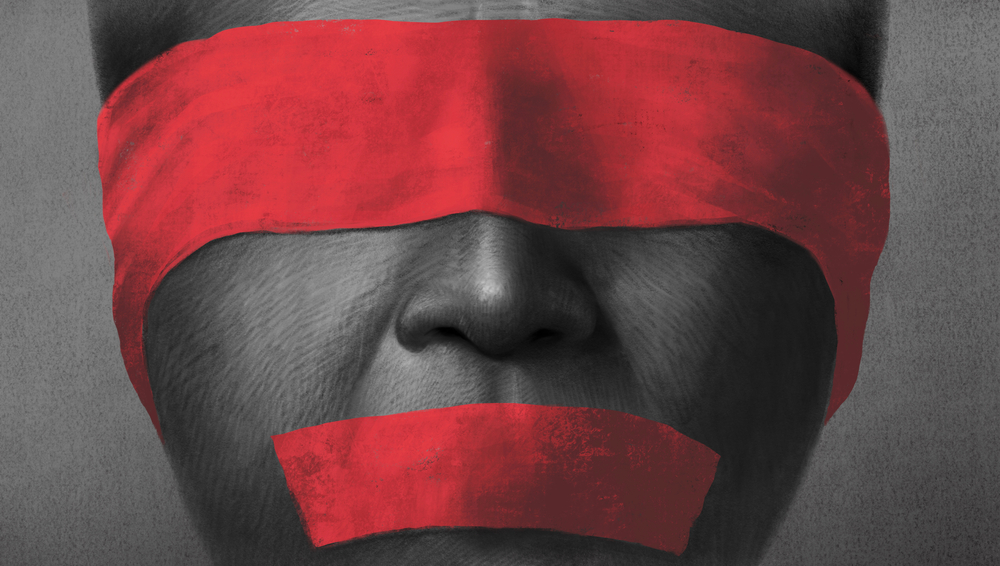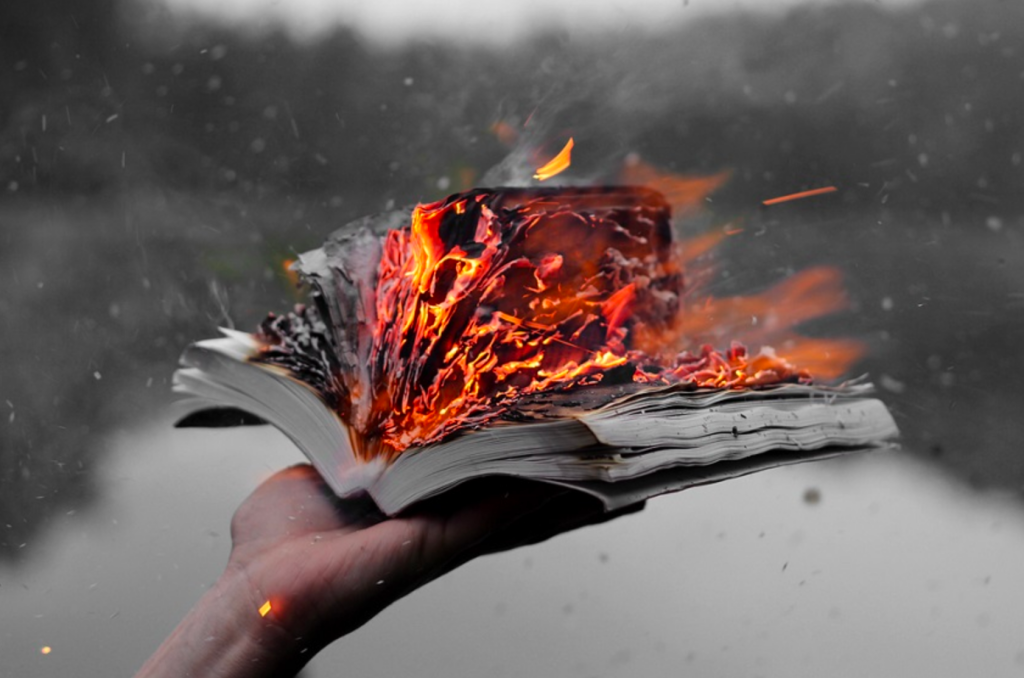Social justice artists at risk, finds new report

Written by Gina Fairley. Originally published by Arts hub, 10 July 2023
Recently, PEN America (New York) – an organisation that describes itself as standing at the intersection of literature and human rights – made the statement: ‘Around the world, socially engaged artists are being threatened, harassed and persecuted by authoritarian governments, which increasingly employ surveillance technologies against them.’
The statement was backed by some pretty alarming statistics:
‘In 2022, PEN America’s Freedom to Write Index documented 311 cases of writers who were detained or imprisoned around the world for their writing or for exercising their freedom of expression. This followed a concerning trend captured in 2021 by the cultural rights organisation Freemuse, and further confirmed by its 2022 findings, which documented 1200 violations of artistic freedom in its annual ‘State of Artistic Freedom’ report – an increase from 978 violations in 2020 and 711 violations in 2019.’
These figures feature in the Executive Summary of PEN America’s latest report (released 27 June) titled, ‘Art is Power: 20 Artists on How They Fight for Justice and Inspire Change’. It was published by the organisation’s working division, Artists at Risk Connection (ARC), which has a mission to ensure that artists and cultural workers can live and create without fear, regardless of their country or discipline.
Sounds idealistic, but in truth it is one of the most pressing issues of contemporary society.
Julie Trébault, Director of ARC and co-editor of the report, says what while the report is grounded in storytelling and first experience accounts, it aims to arm artists against a ‘rising wave of authoritarianism globally, which targets free expression among human rights under attack’.
To keep this real – the ARC received urgent requests for assistance from more than 2006 artists spanning 38 countries and a wide range of disciplines last year (2022), and this was the largest number in a single year since the project was launched in 2017.
‘Art is Power’ is a call to action at a time when action is desperately needed – not only at a bureaucratic level for human rights legislation and reform globally, but within the art world and at a grass roots level, where we are all accountable for change, challenges the report.
Threat on the rise for social justice artists
Karima Bennoune, who was a UN Special Rapporteuse in the field of cultural rights (2015-2021), is among many voices in the report. She writes: ‘Politically engaged artists don’t get enough attention from the arts and human rights fields. And when they do, I’m not sure there’s enough understanding of the fact that artists can be human rights defenders.’
Bennoune continues: ‘I think there have been failings on both sides. On the human rights side, there’s insufficient recognition of cultural rights generally and of cultural rights defenders. On the art side, it’s been interesting to see that often artists will become involved in defending various human rights causes, but there seems to be less of an automatic impulse to defend at-risk artists.’
Author of the report, Juliette Verlaque further sets the scene: ‘The last 15 years have witnessed an outpouring of mass social and political movements around the world, from the Arab Spring in the early 2010s to the more recent #WomanLifeFreedom protests in Iran, 11J protests in Cuba, Spring Revolution in Myanmar and Black Lives Matter demonstrations in the US. Within each of these historic movements, artists have played a critical role in mobilising, sustaining and uplifting their fellow protesters and their message.’
She adds to these the coup in Myanmar in February 2021, the Taliban’s takeover of Afghanistan in August 2021, the invasion of Ukraine in February 2022 and the violent crackdown on dissent in Iran in September 2022. Freedom of speech – contrary to global democracy – is in peril.
In his foreword for the report, US multimedia visual artist, composer and musician, Paul Rucker says: ‘Telling the truth can be seen as controversial. When artists tell the truth, we often become targets. Those who target us know, just like we do, that artistic expression is one of the most powerful tools we have to uplift marginalised voices, change minds and influence policies.’
He continues: ‘People say art is important but, most of the time, they’re not really standing behind artists. It’s our responsibility as artists to make the unseen seen and to foster empathy and understanding.’

Case studies offer patheways
The essays and case examples in this report are excellent.
Of the 20 artists featured, 13 have been forced into exile, either temporarily or permanently; seven have been arrested and detained, some of them multiple times; and four have been subjected to violence, including torture and physical attacks.
‘Some view themselves as artists only, others view themselves as activists first and artists second, and still others resist any attempts to label themselves one way or the other,’ explains Verlaque.
Among the socially engaged artists profiled in the report is the Australia-based, Chinese political cartoonist Badiucao. While Badiucao kept his identity anonymous in the early years of his career, he made his identity known to protect himself and his family.
While he says he is safe today, living in Australia, he states in the report that he has struggled to break into the arts and culture sector here, and has faced frequent censorship. He attributes the reluctance to show his work to Australia’s broader strategic interest in protecting its economic relationship with China.
‘They don’t want to exhibit my work,’ writes Badiucao, ‘because once they do, they will be accused as racist by the Chinese Government. It’s very tricky … because people do not want to take the risk. I tried publicly-funded institutions, museums, private galleries – there is just no way to do that… And it’s really hurting me that I cannot showcase my art, that I cannot earn fairly as an artist by having a gallery representing me and selling my works in Australia.’
Read: Aboriginal activist Richard Bell (de)colonises Tate Modern
Among the other artist accounts in the report are Dashka Slater, a US writer whose YA novel, The 57 Bus: A True Story of Two Teenagers and the Crime That Changed Their Lives, has been banned in schools and libraries due to its depictions of LGBTQIA+ youth and the criminal justice system.
‘I don’t think any of us expected that we would be in this place in the US. But we are dealing with autocracy. We’re looking at state laws that make it impossible to read books that tell the truth about history and real people who live in the world,’ Slater says in the report.
Offering a more extreme account is Ugandan poet Stella Nyanzi – who was arrested and sentenced to 18 months in prison in 2018 for provocative poems that criticised Ugandan Prime Minister Yoweri Museveni. ‘One of the things I hate most is when people say to me on social media, “You have been writing for years, but the president is still in power.” I want to say, respectfully, “[screw] you”. In Uganda, we are fighting a dictatorship, and I do it with poems,’ writes Nyanzi, who now lives in exile in Germany.
Similarly, Burmese visual artist Bart Was Not Here, who became known for his viral digital art series Seeing Red during Myanmar’s Spring Revolution in 2021, was forced to flee the country after his car and studio were shot at. While Afghan “artivist” (artist-activist) Omaid Sharifi, also living in exile, was forced to flee Afghanistan after the Taliban’s takeover in 2021, thanks to his activity as co-Founder of ArtLords – a street art collective that brought community members together to paint murals about human rights issues.
In another example, Malaysian graphic designer Fahmi Reza has been arrested seven times for his artworks that deal with the country’s so-called ‘Three Rs – race, religion and royalty’. He has accumulated hundreds of thousands of followers on social media for his “democracy classes” for young people, his political activism and his searing commentary on Malaysian society.
The ‘Art is Power’ report aims to demonstrate how artists globally are working against adversity to ‘uplift, sustain and mobilise social and political movements’ through their creativity.
Key recommendations:
Additional to first-hand accounts, the report offers recommendations for artists and organisations, from effective mechanisms to support artists to action plans for the Protection of Artists.
It also calls for human rights organisations to better – and proactively monitor and address violations of artistic freedom, and collaborate with art and cultural organisations to better support at-risk artists and understand their needs. Plus it calls for:
- all parties to pay urgent attention to the risks faced by artists and cultural professionals globally
- art organisations to expand the support they offer to at-risk artists in the form of emergency grants, residency programs and increased engagement with refugee artists
- states (governments) to evaluate their policy frameworks, ensure comprehensive protections for artists, and establish and extend effective support mechanisms such as dedicated immigrant pathways and residency opportunities
- the development of a UN Action Plan for the Protection of Artists, recognising the role socially engaged artists play in creating a more open society, and ensuring their right to access protective mechanisms under international human rights frameworks, and
- a more comprehensive approach to implementing the Declaration on Human Rights Defenders.
If you or someone you know is an artist at risk, contact ARC.
Art is Power: 20 Artists on How They Fight for Justice and Inspire Change
Author: Juliette Verlaque
Editors: Rama Halaseh and Julie Trébault
The report features the stories of artists: Didier Awadi (Senegal), Elie Kamano (Guinea), Khalid Albaih (Sudan), Ramy Essam (Egypt), Elyla (Nicaragua), Rebeca Lane (Guatemala), Yacunã Tuxá (Brazil), Badiucao (China), Bart Was Not Here (Myanmar), Fahmi Reza (Malaysia), Leena Manimekalai (India), Artem Loskutov (Russia), Javier Serrano Guerra/Boa Mistura (Spain), Zehra Doğan (Turkey), Stella Nyanzi (Uganda), Emad Hajjaj (Jordan), Samaneh Atef (Iran), Omaid Sharifi (Afghanistan), Dashka Slater (US), and Zeina Daccache (Lebanon).
Gina Fairley is ArtsHub's National Visual Arts Editor. For a decade she worked as a freelance writer and curator across Southeast Asia and was previously the Regional Contributing Editor for Hong Kong based magazines Asian Art News and World Sculpture News. Prior to writing she worked as an arts manager in America and Australia for 14 years, including the regional gallery, biennale and commercial sectors. She is based in Mittagong, regional NSW. Twitter: @ginafairley Instagram: fairleygina